EPA Marks Final Phase Of Gowanus Canal Dredging Pilot

GOWANUS – During Monday morning’s intermittent rain, EPA Regional Administrator Peter Lopez, Assembly Member Jo Anne Simon, and Dan Wiley from Congress Member Nydia Velázquez’s office marked the final phase of the dredging and capping pilot project at the Gowanus Canal’s 4th Street Turning Basin.
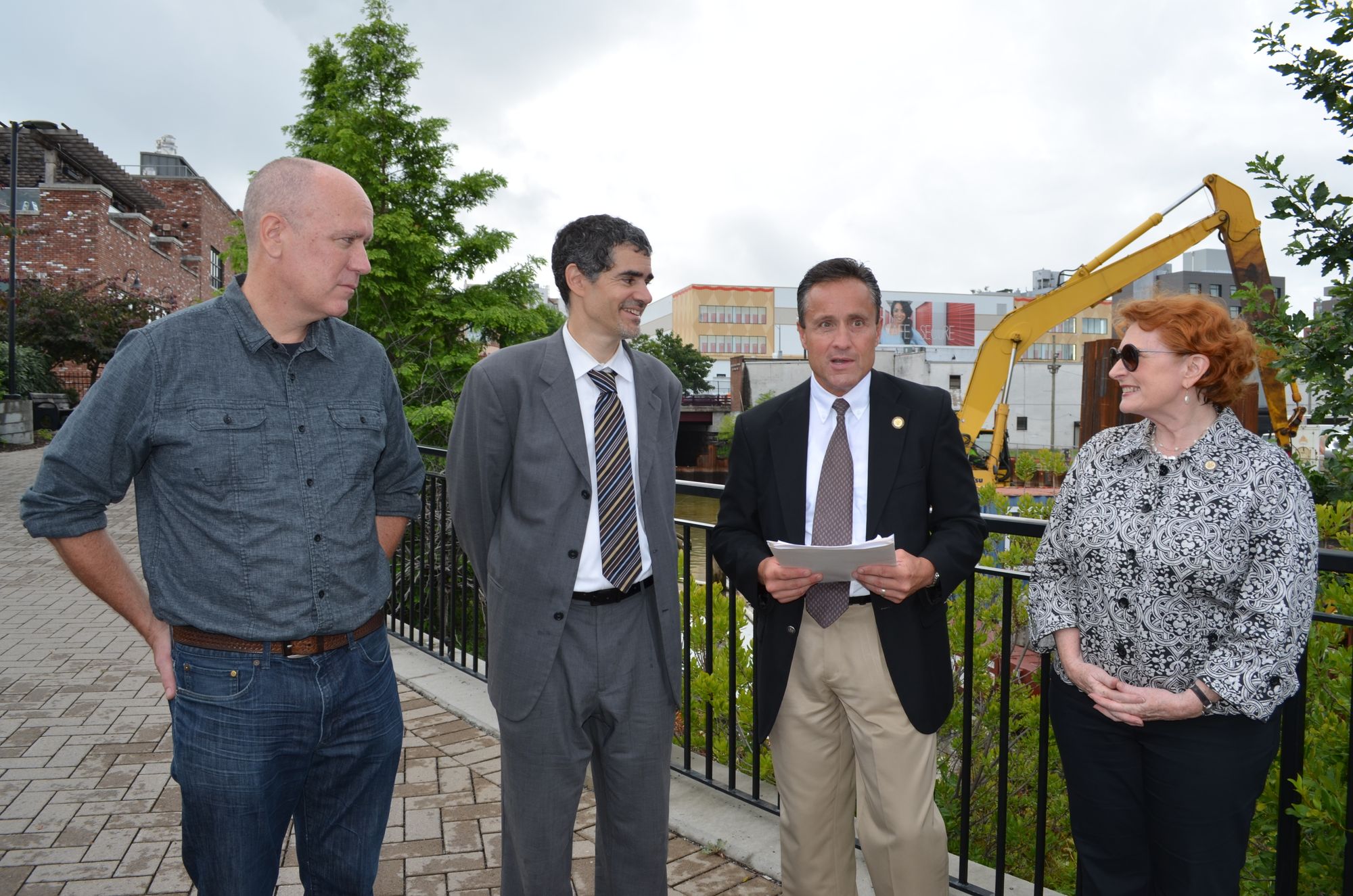
“We’re in the midst of working on our pilot project which is intended to illustrate and test out the methodology for mitigation, to practice some of the methods that we’re using for bank stabilization, and for moving the progress further,” Lopez said while crews poured capping materials into the bottom of the 4th Street Basin behind him. “The capping is what’s underway right now, as you see. We’re laying down the liner,” he explained.
The 4th Street Turning Basin pilot project has included installing steel sheet piles along the banks of the canal to allow for safe dredging, removing approximately 11 feet of sediment from the bottom of the Canal and transporting it to an off-site treatment facility. Currently in its final phase, approximately two feet of sand, clay, and “activated carbon-absorbing materials” are being laid down at the bottom of the turning basin to “create a clean canal bottom.”

“Tremendous progress has been made at this site, and what we are learning here will be applied to the overall cleanup of the Gowanus Canal,” said Lopez. “This pilot project is serving its purpose—to show us what works best and what may not work as well under real-world conditions as we move toward full-scale cleanup of this highly-contaminated canal.”
Approximately 17,000 cubic yards of contaminated sediment have been dredged from the Gowanus Canal’s 4th Street turning basin so far. The project will help the EPA determine the overall engineering design for the dredging and capping of the entire Canal.
The EPA’s final cleanup plan for the Gowanus Canal Superfund site includes:
- Removing contaminated sediment from the bottom of the canal via dredging
- Capping the dredged areas using various capping techniques
- Working with the City of New York to prevent CSO discharges or street runoff from compromising the cleanup
- Excavating and restoring approximately 475 feet of the 1st Street Basin and 25 feet of the 5th Street Basin
- Treating the dredged contaminated sediment at an off-site facility
More than 300,000 cubic yards of highly contaminated sediment is expected to be dredged from the upper and middle portions of the Canal (the upper part runs from the top of the Canal down to 3rd Street while the middle runs from 3rd Street to just south of the Hamilton Avenue Bridge). Another 281,000 cubic yards of contaminated sediment is expected to be pulled out of the lower portion of the Canal (from Hamilton Avenue Bridge down to the mouth of the Canal).

Currently expected to be completed in the fall, the 4th Street pilot study began in October 2017 but ran into delays earlier this year when heavy machinery installing steel sheets to reinforce the crumbling bulkheads along the canal began disrupting some of the surrounding land and nearby buildings. An area of stones on the Whole Foods promenade, where Monday’s press event was held, buckled from vibrations caused by the work, prompting the closure of that section of the promenade to the public.
“Our goal has been to stabilize these banks, that’s what these sheet metal pilings are for, drive them down a significant depth to make sure that as we do the dredging that the banks retain their integrity and can be developed,” Lopez explained. “Some of the soft material that you see here settled, the material was relatively new. As we were driving the sheet piling in, things were moving, some of the material here moved. The method for driving [the pilings] was causing quite a bit of vibration, so we had to step back and assess how we can do that differently.”
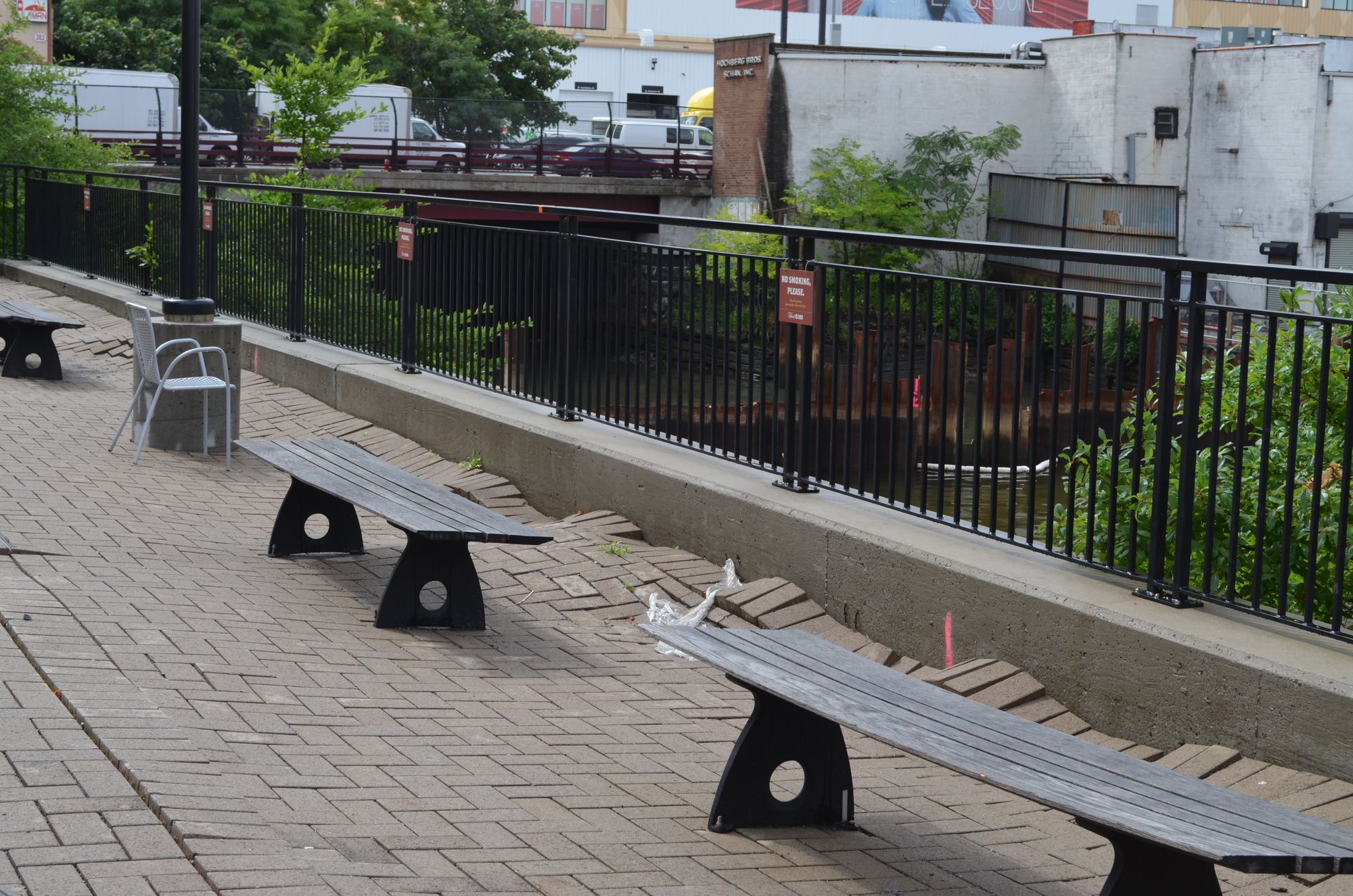
“That started shortly after the piling driving started which was in the earlier part of this year,” Walter Mugdan, EPA Superfund Regional Administrator for Region 2, further explained following the press conference. “Normally pilings are driven by pounding them in, or vibrating them in, and both of those techniques turned out to be unacceptable in this particular location.”
“There was a little bit of cracking occuring in one of the buildings across the [Canal], also from the vibrations, so we ended up directing the company that’s doing the work, to use a different technique which hydraulically presses the pile down into the ground, so rather than pounding it or vibrating it, it simply presses it, and that has the least amount of impact to the surrounding area,” Mugdan added.
“I wouldn’t say it’s dangerous, but we don’t want people walking there,” Lopez said of the damaged portion of the walkway. “The main structures as we understand are solid, it’s just the soft material in between. The building foundation and the concrete wall, [those are] not moving, but there was soft material in between that settled.”
“Once [the pilot] is done, the parties who are part of the process will help restore [the promenade],” Lopez added. “We have an agreement with Whole Foods, to come back and help restore their property and return it to its previous condition.” Among the Primary Responsible Parties [PRPs], National Grid is the lead responsible party that is contracting and overseeing the work at the pilot site, according to Mugdan.
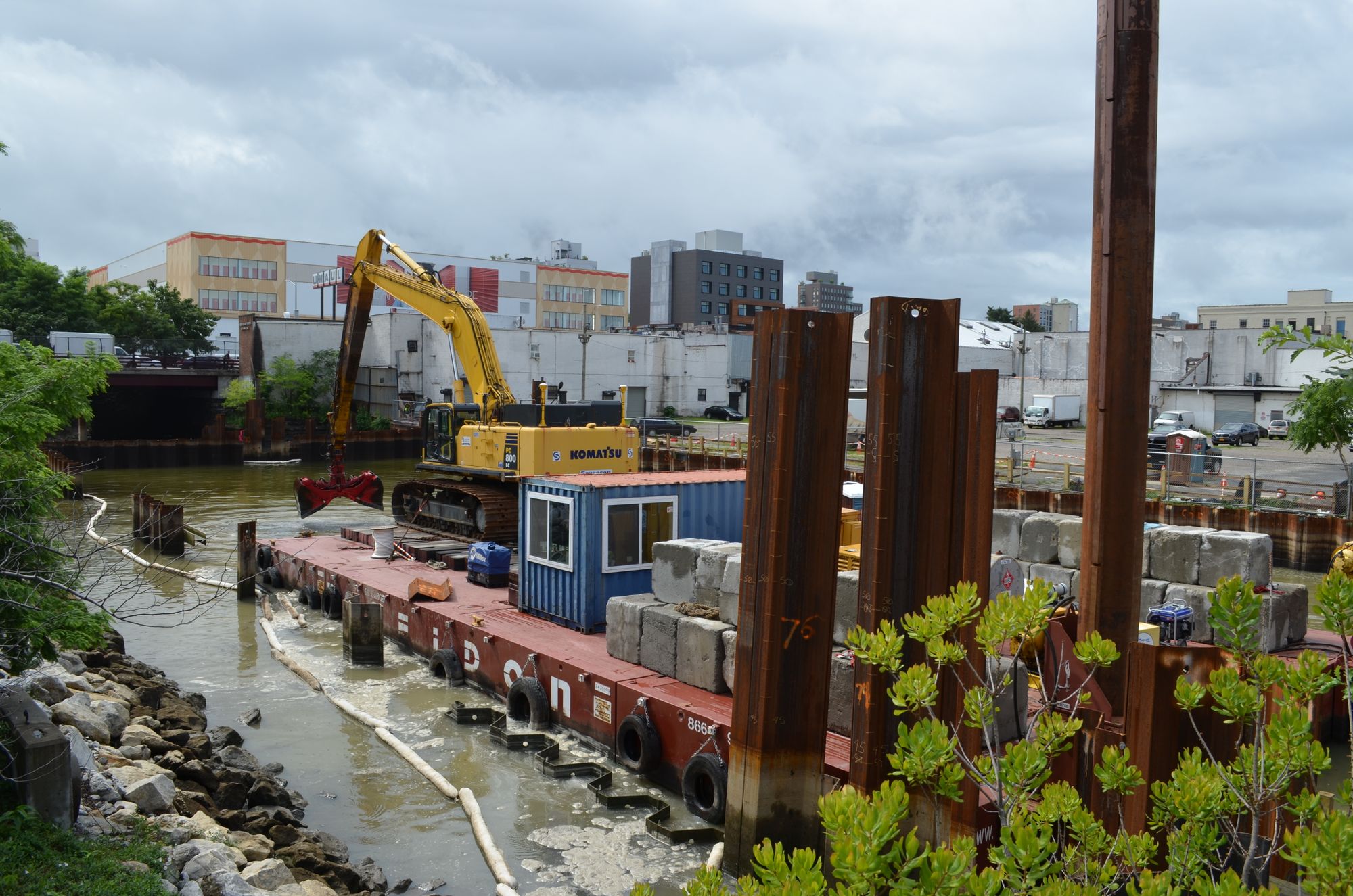
The pile driving along other areas of the canal will be done “site by site,” Mugdan said. “We now have a variety of techniques and we know that this pressing technique is available—it requires specialized equipment—but it’s available to us if and when it’s necessary.”
Selecting which type of capping material will be used will also be determined “site by site” as the cleanup progresses along the Canal. An “amended cap” was being laid down into the pilot site throughout Monday’s press event. “It has additional carbon-rich material in it beyond sand, so it not only provides a physical barrier between the contaminated sediment below and what’s above, it also creates a barrier that will capture chemicals as they come up,” Mugdan explained.
“There are a variety of [capping] techniques that we piloted and different techniques will be used in different parts of the canal depending on the level of contamination,” he continued. The head of the canal, the area opposite Public Place, and the area opposite Lowe’s have experienced the heaviest contamination because each location formerly housed a manufactured gas plant, according to Mugdan. “Those are areas of heavier contamination. With the coal tar material, contamination goes down as much as 100 feet, it can’t all be dug out, so those are the areas where we’ll get rid of the soft gooey stuff, the ‘black mayonnaise.’ The harder sediment below that’s still contaminated will get solidified with this process of adding cement in place, in situ, and it [will] become like a sheet of concrete.”
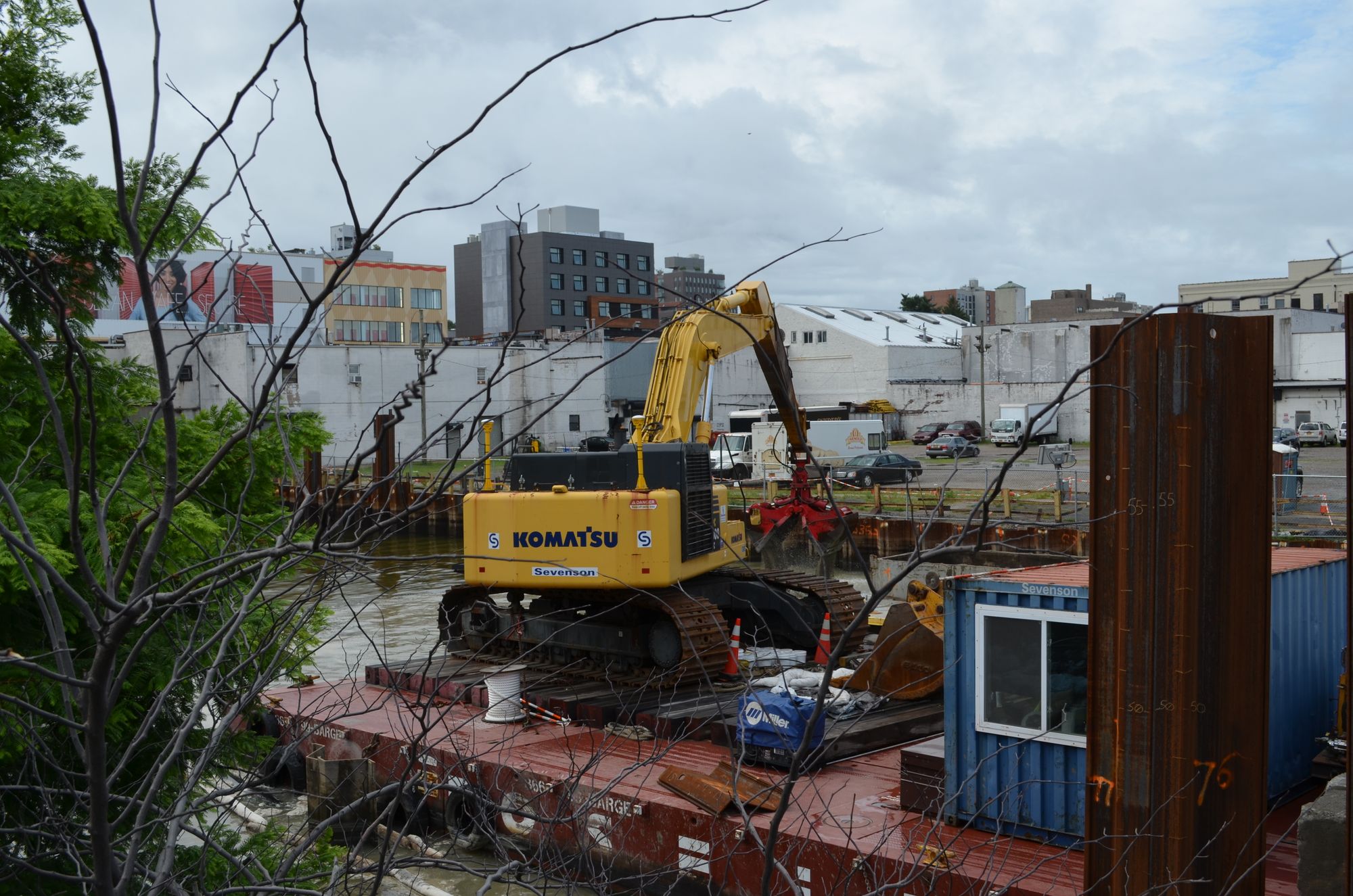
“There are many things that make the canal unique,” Mugdan explained. “It’s so narrow, it’s right in this extremely dense urban area, there are these low bridges they have to work around. There are a lot of things that make this an engineering challenge and a logistics challenge. These turning basins have provided a useful locale for doing these pilots, then we eventually get out into the main stem of the canal and we have some better background as to what we’re doing.”
Dan Wiley, District Office Director for Congress Member Nydia Velázquez, reminded those in attendance at the press event that a North Gowanus Public Visioning Session will take place Wednesday evening. “Not only do we have the cleanup, we also have to make sure that we preserve the community and we’re able to get the best deal for the locality,” Wiley said.
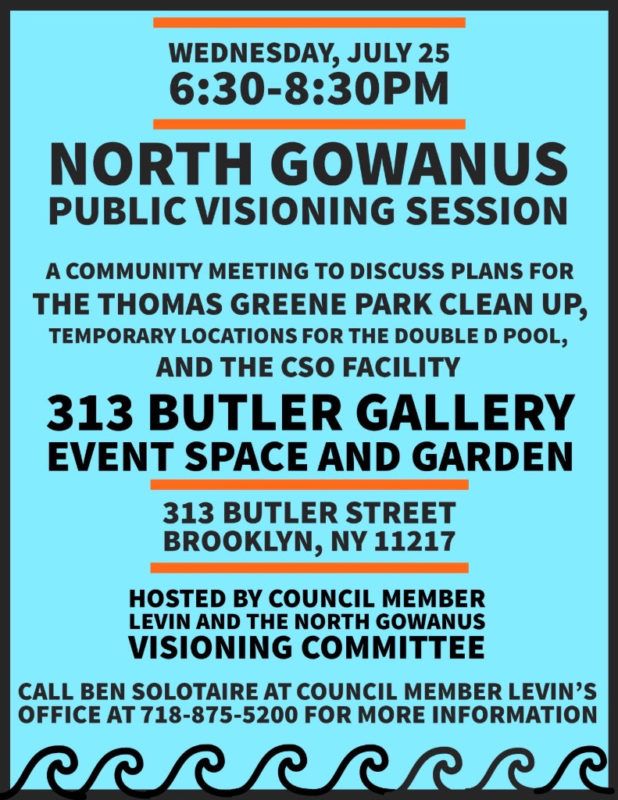
Council Member Stephen Levin represents the northern section of Gowanus. His office coordinated Wednesday’s meeting, and while the Council Member was not at the press conference, a representative of his, Ben Solotaire said, “We’re committed to the cleanup of the canal, we’ve been working with our elected partners in the community. We want to guarantee that the open space at the canal where the CSO tank facility is going to go and the other spaces are designed and being constructed with the community in mind and with the input of the community. As this process moves forward we look forward to working together with everybody and making it successful.”
The 4th Street Turning Basin pilot project is scheduled to be completed in the fall. The “full-scale dredging of the remainder of the Canal” is scheduled to begin in 2020. The estimated cost of the Superfund cleanup project is $506 million.
Today’s press event coincided with the one-year anniversary of the release of the EPA’s Superfund Task Force Report. The Superfund Task Force was established to provide recommendations for improving the Superfund program. Learn more bout the Superfund Task Force at epa.gov.




